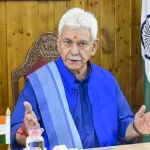Kashmir, a land known for its breathtaking beauty, timeless traditions, and deeply rooted cultural heritage, has always taken immense pride in preserving its identity. The Valley has withstood the tests of time, maintaining its unique customs despite external influences. However, in the name of modernity, globalization, and evolving lifestyles, Kashmir now faces a cultural shift that is both unprecedented and alarming. The influx of Western-inspired ideas is reshaping the social landscape, raising concerns about how long the region can hold on to its values without being swept away by a tide of cultural transformation.
A recent event that brought this debate to the forefront was the fashion show held in Gulmarg during the holy month of Ramadan. Many saw it as a direct challenge to the moral and cultural fabric of Kashmiri society. Beyond the event itself, the larger concern is whether Kashmir is on the verge of losing its distinct identity. Should there be a conscious effort to ensure that modernization does not come at the cost of cultural dilution? And if so, how can a balance be struck between progress and preservation?
Cultural evolution is a natural phenomenon, but not all changes are beneficial. Societies define themselves by their traditions, ethics, and shared values. Kashmir’s heritage, shaped by Sufi influences and a deeply spiritual way of life, has always emphasized modesty, humility, and ethical living. The introduction of foreign ideals, often through entertainment and social media, is gradually altering these principles. The way people dress, the way celebrations are conducted, and even the way young Kashmiris perceive their own traditions are shifting. This is not merely an observation—it is a reality unfolding across generations.
Fashion shows and similar events may seem harmless at first glance, but their impact is far-reaching. When local models participate in such shows, it sends a message that embracing Western trends is not only acceptable but desirable. This subtle yet powerful influence normalizes a lifestyle that may not align with the cultural ethos of Kashmir. Over time, what begins as an occasional event becomes a regular occurrence, paving the way for a larger transformation of societal norms. This pattern has been observed globally—where societies gradually adopt foreign customs until their indigenous traditions fade into the background.
Kashmir, despite its strong cultural roots, is not immune to this change. Social media and entertainment platforms play a significant role in shaping public opinion, particularly among the younger generation. Exposure to global lifestyles, coupled with the allure of modern trends, makes it easier for young people to distance themselves from their own traditions. This is not to say that all change is bad—progress and modernization are necessary for any society to thrive. However, progress should not come at the expense of losing the very essence that makes a culture unique.
There is a common argument that cultural restrictions suppress personal freedom. Some believe that events like fashion shows are simply an expression of creativity and that opposing them is regressive. But true freedom is not about mindlessly following global trends; it is about making informed choices that align with one’s values. No civilization has ever flourished by abandoning its cultural roots under the guise of modernization. When a society allows external influences to dictate its identity, it risks losing not only its traditions but also its sense of self.
The concern is not about a single event but about the precedent it sets. Today, it is a fashion show; tomorrow, it could be music festivals promoting ideologies that are entirely foreign to Kashmir’s cultural fabric. With time, what was once considered inappropriate will become normalized, leading to a complete transformation of societal values. Cultural erosion does not happen overnight—it is a slow process, driven by seemingly insignificant changes that, over time, alter the collective consciousness of a society.
Kashmir’s cultural wealth is not just about traditions; it is an integral part of its identity. Literature, art, music, traditional clothing, and language all play a role in defining who Kashmiris are. Preserving these aspects is not about resisting progress but about ensuring that progress happens on Kashmir’s own terms. The challenge is to find a way to embrace modernization while staying true to the region’s core values.
Instead of allowing Western ideals to reshape the Valley, efforts should be made to strengthen and promote Kashmiri culture. Schools and colleges must incorporate teachings about Kashmiri history, literature, and traditions so that younger generations develop a sense of pride in their roots. Without this connection, the risk of cultural alienation increases, leaving future generations disconnected from their heritage.
Media also has a crucial role to play in shaping narratives. Local television channels, newspapers, and digital platforms should focus on content that resonates with Kashmiri values rather than blindly following global entertainment trends. The power of media in shaping public perception is immense, and it must be used responsibly to ensure that cultural preservation remains a priority.
Rather than promoting fashion shows that introduce foreign influences, there should be a conscious effort to highlight Kashmir’s own artistic and cultural wealth. The region is home to some of the finest artisans, known for their Pashmina shawls, handwoven carpets, and intricate embroidery. Showcasing these crafts through cultural exhibitions can serve as a powerful counterforce to the growing inclination towards Western trends. Such initiatives will not only preserve traditional skills but also instill a renewed sense of appreciation for indigenous culture.
Families, too, have a responsibility in shaping the cultural identity of the next generation. The home is where traditions are passed down, and parents must ensure that their children remain connected to their heritage. Simple practices—such as wearing traditional attire on special occasions, celebrating local festivals with enthusiasm, and narrating stories of Kashmir’s rich past—can go a long way in keeping cultural traditions alive.
At this critical juncture, Kashmir must decide what kind of future it envisions for itself. While globalization and external influences are inevitable, they must not come at the cost of erasing the essence of Kashmiri culture. Fashion shows and similar events that introduce foreign ideals should be carefully examined to determine their long-term impact on society. The goal should not be to resist change altogether but to guide it in a way that ensures Kashmir’s values remain intact.
The preservation of cultural identity is not just about nostalgia—it is about ensuring that future generations have a strong sense of belonging. If cultural dilution continues unchecked, the youth of Kashmir may one day find themselves detached from their own heritage, viewing their traditions as outdated or irrelevant. This would mark the true loss of Kashmir’s identity.
The most effective way forward is through education, awareness, and collective effort. Cultural preservation cannot be achieved through bans alone—it requires active engagement from all sections of society. Intellectuals, scholars, and community leaders must take the initiative to educate the youth about the importance of upholding their traditions. More importantly, Kashmiris themselves must take pride in their culture and ensure that it remains a defining part of their identity.
A society that forgets its roots loses its direction. Kashmir has a legacy worth preserving, and it is the duty of every Kashmiri to protect it from being eroded in the name of modernity. The real challenge lies in striking a balance—welcoming progress while staying anchored to tradition, embracing new ideas while safeguarding the values that have defined Kashmir for centuries. If this responsibility is taken seriously, Kashmir can stand as an example of how a society can evolve without losing itself in the process.
( Author is RK Columnist and can be reached at: [email protected])








